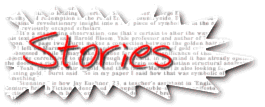|
 A panel of seven
scientists and journalists who started out looking at collaboration
between them wound up instead confronting the gap that separates them
Thursday at the University of Arizona. A panel of seven
scientists and journalists who started out looking at collaboration
between them wound up instead confronting the gap that separates them
Thursday at the University of Arizona.
 What sparked the debate
was use of the word collaborate. What sparked the debate
was use of the word collaborate.
 The debate came during a
panel before about 50 people at the seventh annual convention of the
Society of Environmental Journalists. The debate came during a
panel before about 50 people at the seventh annual convention of the
Society of Environmental Journalists.
 The word is a good
example of how journalists and scientists are different, Chris DeCardy
from the Environmental Media Services said. The word is a good
example of how journalists and scientists are different, Chris DeCardy
from the Environmental Media Services said.
 "The use of the word
collaborate is thought of differently by the two groups," he said. "The use of the word
collaborate is thought of differently by the two groups," he said.
 DeCardy translates
hard-core science into readable material. So in this way he was a
natural mediator for the group. DeCardy translates
hard-core science into readable material. So in this way he was a
natural mediator for the group.
 Scientists noted they
collaborate with colleges and other professionals to glean expertise
they don't have. But the word collaborate for journalists takes on a
more offensive meaning, perhaps more like collusion, they said. Scientists noted they
collaborate with colleges and other professionals to glean expertise
they don't have. But the word collaborate for journalists takes on a
more offensive meaning, perhaps more like collusion, they said.
 Collaboration between
journalists and scientists is a misnomer, said Paul Larmer, a journalist
for the High Country News in Colorado. Collaboration between
journalists and scientists is a misnomer, said Paul Larmer, a journalist
for the High Country News in Colorado.
 "A journalists
responsibility is to question science," he said. "A journalists
responsibility is to question science," he said.
 Journalists on the
panel say they don't want to be reduced to publicists for science. Journalists on the
panel say they don't want to be reduced to publicists for science.
 "I don't want to be (a
publicist)," said Paul Paeburn of Business Week. "I don't want to be (a
publicist)," said Paul Paeburn of Business Week.
 Making an effort to
reframe the negative image of a collaborator, he said "collaboration is
better thought of as being like a drama critic". Making an effort to
reframe the negative image of a collaborator, he said "collaboration is
better thought of as being like a drama critic".
 The scientists appeared
bewildered by the recoil of the journalists. The scientists appeared
bewildered by the recoil of the journalists.
 "I don't see why
collaboration is given such a negative connotation," said Stephen
Buchmann of the U.S. Department of Agriculture. "I don't see why
collaboration is given such a negative connotation," said Stephen
Buchmann of the U.S. Department of Agriculture.
 Collaboration, he said,
doesn't have to be synonymous with sellout from a scientific point of
view. Collaboration, he said,
doesn't have to be synonymous with sellout from a scientific point of
view.
 Media collaboration
provides expertise to shape a story so that science can be communicated,
explained Gary Nabhan, scientist from the Arizona-Sonora Desert Museum. Media collaboration
provides expertise to shape a story so that science can be communicated,
explained Gary Nabhan, scientist from the Arizona-Sonora Desert Museum.
 The idea is for
journalists and scientists to come half way, Larmer said. That way,
journalists become more sophisticated and confident and scientists
become clearer in what they are saying, he said. The idea is for
journalists and scientists to come half way, Larmer said. That way,
journalists become more sophisticated and confident and scientists
become clearer in what they are saying, he said.
 As the public continues
to demand more scientific information journalists will become more
sophisticated in the way they present scientific information,
journalists agreed. As the public continues
to demand more scientific information journalists will become more
sophisticated in the way they present scientific information,
journalists agreed.
 In the same way
scientists will become more savvy toward word weavers who communicate
for them, they said. In the same way
scientists will become more savvy toward word weavers who communicate
for them, they said.
|
